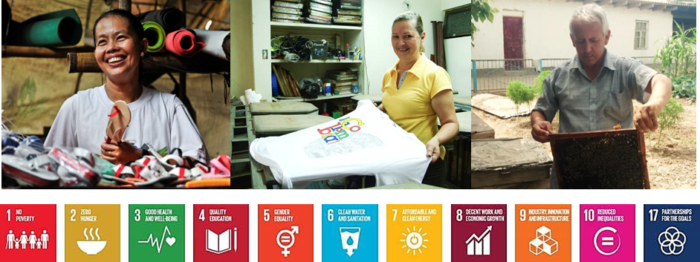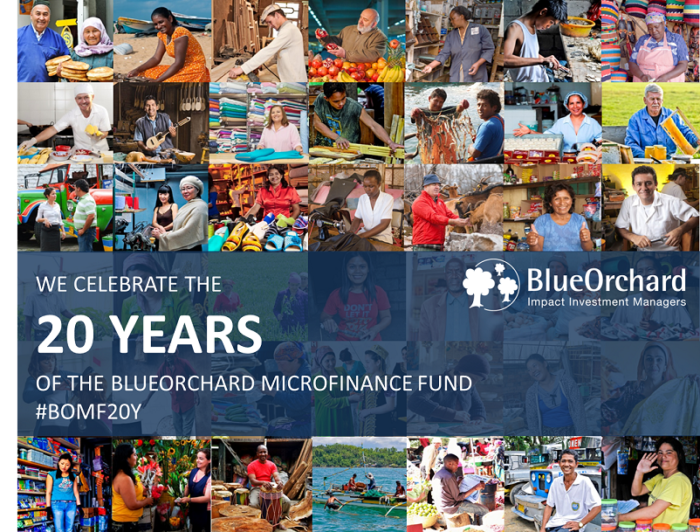“Like slavery and apartheid, poverty is not natural. It is man-made and it can be overcome and eradicated by the actions of human beings.” Nelson Mandela
Over the past decades, microfinance has been recognized as a powerful tool to address economic exclusion. In 1997, the United Nations, therefore, began devising a viable plan to involve commercial actors in strengthening the microfinance sector and in building an inclusive financial system. In order for microfinance to scale up, the UN General Assembly declared that 2005 would be the Year of Microcredit. This formal call for action led to the creation of a number of initiatives. Among them was the creation of the BlueOrchard Microfinance Fund (BOMF) in 1998, the first commercial microfinance investment fund in the world.
20 years later and with more than USD 3.1 bn capital deployed since inception, BOMF is the largest commercial microfinance fund in the world, representing an established benchmark within the impact investing industry. Since 1998, BOMF has successfully connected public and private investors with micro-entrepreneurs by sustainably funding Microfinance Institutions (MFIs) in emerging markets. Through debt financing and sharing expertise, the fund supports MFIs in improving the quality of their financial services and helps them develop new products (e.g. savings, insurance, and payment services) to expand their outreach in emerging markets. First aligned with the Millennium Development Goals, and now addressing 11 out of the 17 Sustainable Development Goals established by the UN, BOMF has been contributing to sustainable economic and social development for 20 years. Since its inception, BOMF has provided funding to 325 different MFIs located in 69 emerging and developing countries, providing access to financial and other related services to over 20 million micro-entrepreneurs worldwide.

Success stories from BOMF end clients
Microfinance has been instrumental in the fight against poverty and in fostering financial integration of the poorest segments of society. Over the years, BOMF has helped many individuals and their families escape poverty and improve their quality of life through microlending like Jennifer Dalida from the Philippines. When her husband lost his job in 2001, they found themselves in a precarious situation. To address this issue, she decided to start manufacturing and selling children’s slippers from their home. With a first loan from the Cooperative Rural Bank of Bulacan (Filipino MFI) she purchased raw materials to launch her production. As her business grew, she began training and finally employing family members to assist her in producing the slippers, whereby the loan she received enabled her to double production and provide salaries. This little business has allowed Jennifer and her family to escape the cycle of poverty.
But microfinance does more than just enable financial inclusion. It can contribute to female empowerment and thus contribute to fighting gender inequality. Serving 54% of women end clients, BOMF has a strong track record in empowering women in emerging markets to become self-reliant business owners, directly addressing the United Nation’s Sustainable Development Goal for gender equality.
The story of Amanda Guarin, a female entrepreneur in Cali, Colombia, shows how microfinance has helped address poverty and gender inequality. Single mother of four, Amanda needed to find a way to support her family. With a loan from Women’s World Banking (Colombian MFI), she created her own embroidery business from scratch in 1999. As the owner of a successful and growing business, she became financially independent and was able to care for her children. Additionally, her business positively affected the lives of the 20 other women she employs, who are now able to benefit from financial security and flexible working hours as well.
Microfinance also helps to reduce inequalities within countries, specifically in reducing economic disparity between urban and rural areas. Often, traditional banks are absent from rural areas, thus complicating access to the financial system for the rural population. In recognizing that providing services to people in remote areas is key to fighting poverty and reducing inequalities, MFIs have strived to increase their presence in these areas. Abastor Alimov, an agriculturalist and beekeeper from Tajikistan, benefitted directly from the increased presence of MFIs in the Tajik countryside. In 2015, he received a loan from MDO “Humo”, which he used to purchase the livestock and beehives necessary to expand his business. Overall, microfinance helped him improve his business as well as increase his family’s income without forcing him to relocate to an urban area. He is one of the 42% of BOMF end clients living in rural areas whose living conditions improved with access to the financial system.
Like Jennifer, Amanda and Abastor, in the last two decades, over 20 million people in 69 different countries have benefited from BOMF funding to grow their business, become financially stable and improve their social well-being. These success stories show that microfinance is a powerful tool to fight poverty and facilitate the economic inclusion of marginalized groups while generating attractive returns for investors. The growing interest in sustainable investments, as well as advances in technology, point to further growth and diversification of microfinance still to come.
